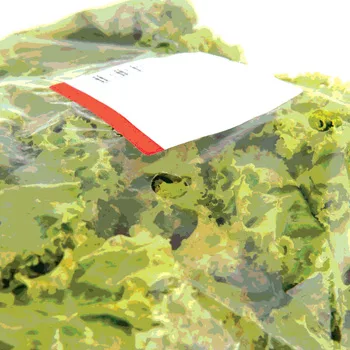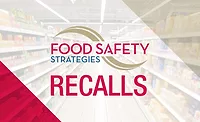Packaging: The Final Ingredient

Organic foods are growing at a fast clip as consumers shop for minimally processed and pesticide-free products with understandable “clean labels” uncluttered with artificial ingredients. As these health-conscious consumers pay more attention to the substances that enter their bodies and the environment, they also expect that organic food packaging will be ecologically friendly to ensure they aren’t consuming any “accidental” ingredients. Concerned by the possibility of chemical transfer between packaging and food, and fueled by an abundance of information—some credible, some not—some consumers are advocating for tighter controls on certain substances found in packaging materials.
Amid this climate, it is important for manufacturers of organic or clean-label products to look beyond the ingredients in the mixer and select packaging that helps them deliver on brand promises of purity. Suppliers are working to provide materials and containers that meet these consumer expectations, as the growth of organic options does not appear to be slowing anytime soon.
Stocking the Shelves with Organic Goods
Organic food sales are growing at twice the rate of conventional groceries. Transparency Market Research pegs the global organic food market at $105 billion in 2015, up from $57 billion in 2010. In the U.S., sales of organic packaged foods notched up 5 percent in 2014, hitting $12.8 billion with predictions for 3 percent annual growth through 2019, according to a 2015 Euromonitor International report. The study partly attributed this increase to the fact that more consumers view these goods as essential purchases, particularly in the case of foods for infants and children.
As organics move more into the mainstream, retailers are increasing their portfolio of organic products. Supermarket giant Kroger reported double-digit unit and sales growth with its Simple Truth line of natural and organic foods, which hit $1.2 billion in sales in 2014. Target launched the Simply Balanced private-label line with plans to have over 250 products that are free of common food additives, 40 percent of which will be organic.
Also, Walmart is poised to shake up the organic food category with its rollout of the Yucaipa co-owned Wild Oats brand at prices at least 25 percent lower than national organic brands, similar to traditional grocery prices. Euromonitor predicts a potentially massive impact on the organic foods segment as the affordable organics pull Walmart’s middle-income shoppers into the organic fold.
Major manufacturers including General Mills and Danone SA have entered the business via acquisitions, while other companies and brands have launched organic line extensions in categories such as baby food and snacks, according to Euromonitor’s report.
Consumer Concern Prompts Regulation
Helping drive the growth of organic and natural products is growing consumer concern around the chemicals present in food. At the same time, consumers are becoming increasingly vocal about these concerns, prompting regulatory bodies and industry players to impose limits on substances deemed in any way hazardous.
As global regulation imposes limits and bans on substances such as bisphenol A (BPA), organic and natural food manufacturers have acted to remove the suspect chemicals. While banning BPA in baby and infant packaging and containers, the U.S. Food and Drug Administration (FDA) did stress that BPA exposure levels in food contact materials (FCMs) are safe, posting reports suggesting that infant and fetus exposure to the chemical generally occurs at a smaller level than once believed.[1]
However, the U.S. was not the first nation to regulate chemicals in food packaging. Canada, China and the United Arab Emirates are among countries banning BPA’s use in baby bottles. As the European Union phases in its 2006 legislation concerning the registration, evaluation, authorization and restriction of chemicals, some countries are still lobbying for even tighter controls on endocrine-disrupting chemicals.
Manufacturers Get Proactive
While global regulations phase in, change has not been instantaneous. However, as countries around the world impose more stringent regulations around chemicals found in consumer goods, many manufacturers are getting ahead of these standards by making proactive refinements to their products and packaging. With demand for organic products at an all-time high, manufacturers in the U.S. prepare to compete for consumer loyalty by prioritizing earth- and body-friendly substances. Johnson & Johnson has pledged to remove chemicals including triclosan and phthalates from baby and adult products,[2] and Procter & Gamble is phasing out triclosan and diethyl phthalate from personal care and cleaning products.[3,4]
In 2014, Walmart said it would work with suppliers to reduce or eliminate 10 high-priority chemicals in cleaning, personal care and cosmetics products. While the chain said it is not publicizing the list for business reasons, watchdog groups expect it to include chemicals deemed by regulatory bodies to be endocrine disrupters, carcinogens and bioaccumulative toxins.[5–7]
Campbell Soup Company and General Mills said they are phasing out BPA in all canned products, with General Mills pulling the chemical from its Muir Glen line of canned organic tomatoes. ConAgra announced this year that all its facilities in the U.S. and Canada have moved to cans without BPA liners, and H.J. Heinz has moved to BPA-free products, including baby food and juice containers. Walmart and Whole Foods stopped selling baby bottles made with BPA, and Trader Joe’s said it’s working toward a full phaseout of the chemical.
Living Up to Promises of Purity
Organic food brands recognize that commitments to overall health extend to the provision of packaging that will not undermine their promises of organic, natural and chemical-free goods. To ensure that clean-label foods and other goods remain that way, many of these companies are selecting materials and containers that minimize the risk of chemical leaching.
For example, TruBee Honey packages its offerings in glass jars, which not only offer a high-end look but also register with consumers as a safer option than packaging more closely associated with chemical liners. The fact that the containers are also reusable also appeals to the brand’s target audience of eco-conscious individuals.
Pacific Foods is taking its commitment to sustainability even further. The Oregon-based company, devoted to sustainably packaged and locally sourced natural and additive-free foods, is working toward a zero-waste-to-landfill goal by reducing food-contaminated packaging waste from operations. Using aseptic fillers and packaging materials, Pacific Foods has a specially made machine that cleans the waste packaging material and crushes it in preparation for sale to recycling companies.
Other companies are getting even more creative in bringing to market innovative and natural packaging solutions. Quantum Designs’ WikiFoods technology wraps foods and beverages in edible packages made of natural ingredients. Stonyfield Farm has developed Frozen Yogurt Pearls in WikiPearl protective packaging made from fruit skins and is working with retailers for ways to sell them totally package-free.
Companies can reference the standards for guidance on best practices in organic food packaging offered by IFOAM – Organics International. The established norms for agencies certifying organic claims include that operators should not use packaging material that may contaminate organic products or materials that have been in contact with substances likely to compromise organic integrity and avoid commingling organic products with nonorganic products from processing through transport. Companies should use biodegradable packaging materials, reusable packaging and recyclable packaging toward minimizing total environmental impact.
IFOAM calls out polyvinyl chloride (PVC) and aluminum as materials to avoid and prohibits packaging materials and storage containers that contain a synthetic fungicide, preservative or fumigant. The use of nanomaterials is prohibited in organic food production, processing and packaging.
Making Innovation Accessible
Brands moving to earth-friendly solutions can look to conventional packaging materials and newer substances that promise minimal impact on health and the environment. For example, bioplastics limit or remove petroleum-based ingredients, supporting smaller carbon footprints and recycling. Polyethylene terephthalate (PET) plastics made partially from plants are already used in soft-drink containers. Wild Oats uses polylactic acid bioplastics derived from starchy sources like corn that harmlessly biodegrade. Even natural oleoresins can be used in can liners as an alternative for BPA-containing resins; however, their effectiveness as a substitute for BPA, which is used to ward off botulism and spoilage, must be established.
As consumers favor packaging sourced from natural materials and made with as few chemicals as possible, paper products and plant fiber packaging may provide favorable options.
For highly acidic foods that can compromise can liners, organic foods have moved to glass jars. However, PET and high- and low-density polyethylenes are largely viewed as low-hazard plastics. Winemakers are even evaluating PET bags as a potentially acceptable alternative to glass.
Nanomaterials are at the forefront of package technology development. Composed of particles with minuscule nanoscale dimensions, nanomaterials promise advantages that include reduced material, improved strength with less weight, enhanced barrier, temperature control and active antimicrobial actions. Nanocomposites are used today to minimize CO2 leakage in carbonated beverage bottles and in food storage bins where embedded silver nanoparticles kill bacteria.
While potential applications could solve myriad challenges in food packaging, little is known about their safety, with concerns that the tiny particles can penetrate more easily and more deeply into the body and linger longer in the environment. FDA recommends that companies consult with the agency before going to market with nano-materials, which may require a case-by-case safety review.
Exercising Caution
While a wave of innovation is broadening options for organic brand owners that demand packaging as wholesome as their products, other widely used food packaging materials have raised concerns. Brands have moved to phase out polystyrene foam packaging. The National Research Council in 2014 affirmed an earlier National Toxicology Program finding that styrene leaching from food and drink containers is potentially carcinogenic. McDonald’s recently switched from polystyrene foam “clamshells” to paper-based wraps for its sandwich packaging, and Jamba Juice committed to stop using polystyrene foam cups after more than 130,000 people signed a petition calling for action.
As manufacturers make BPA-free claims, consumer groups say that synthetic materials named as alternatives have not been well studied. PVC has been named as a potential replacement to BPA,[8,9] but critics have tagged PVC as a phthalate-leaching plastic tied to a range of adverse health effects. Some manufacturers are substituting BPA with its chemical cousin bisphenol S, which studies such as a recent paper by the University of Texas have shown acts in low doses as an endocrine disrupter in similar fashion to BPA.[10,11]
As consumers have become more keenly aware of the value of recycling as a sustainable practice, they increasingly look for packaging that contains recycled content or supports recycling. For recycled plastics, FDA concerns center on the incorporation into FCMs of recycled postconsumer material not regulated for food contact use, and the migration of contaminants in recycled material into FCMs. Manufacturers using recycled material in FCMs must report on the material’s source, controls ensuring that only plastic that was initially compliant is recycled and a description of the recycling process.
Finding the Right Solution
While there is a great deal to be learned about the safety of food packaging materials, brands cannot afford to ignore the growing consumer demand for assurances the food they purchase is safe for their bodies and the environment. As more consumers opt for organic options, food manufacturers must source packaging that supports their promises of purity—and effectively communicate the steps they are taking to ease the concerns of discriminating shoppers.
Jorge Izquierdo is the vice president, market development, for PMMI.
References
1. www.fda.gov/ForConsumers/ConsumerUpdates/ucm297954.htm.
2. www.jnj.com/caring/citizenship-sustainability/strategic-framework/ingredient-safety.
3. www.womensvoices.org/2013/09/05/procter-gamble-eliminating-phthalates-triclosan-from-products-worldwide/.
4. www.pg.com/en_US/sustainability/safety/ingredients/triclosan.shtml.
5. greensciencepolicy.org/walmart-tackles-its-top-ten/.
6. saferchemicals.org/2014/02/28/walmart-tackling-toxic-chemicals-will-their-suppliers-listen/.
7. www.ewg.org/enviroblog/2013/09/major-corporations-placing-their-consumers-health-first.
8. www.breastcancerfund.org/big-picture-solutions/make-our-products-safe/cans-not-cancer/.
9. noharm-uscanada.org/issues/us-canada/pvc-and-phthalates.
10. www.scientificamerican.com/article/bpa-free-plastic-containers-may-be-just-as-hazardous/.
11. ehp.niehs.nih.gov/1205826/.
Looking for quick answers on food safety topics?
Try Ask FSM, our new smart AI search tool.
Ask FSM →








